The best treasure finds of 2020
Treasure discovered in 2020
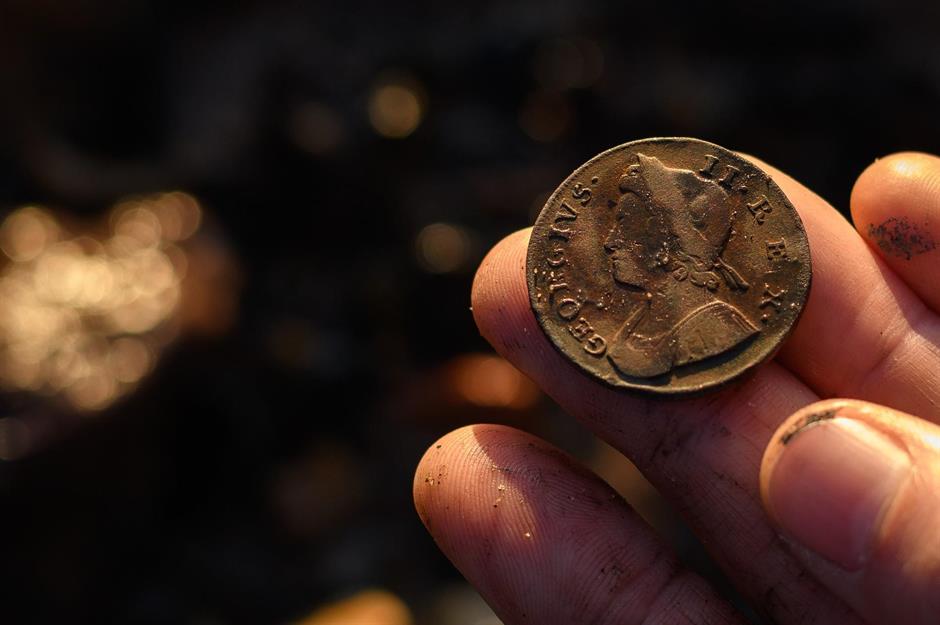
In a year as challenging as 2020, the fact that beautiful and often valuable treasures keep being discovered brings a ray of hope. From gold found in shipwrecks to the alleged discovery of the famous Forrest Fenn treasure, click or scroll through to look at the best treasure finds of 2020. All dollar values in US dollars unless otherwise stated.
Royal commemorative coins among decay
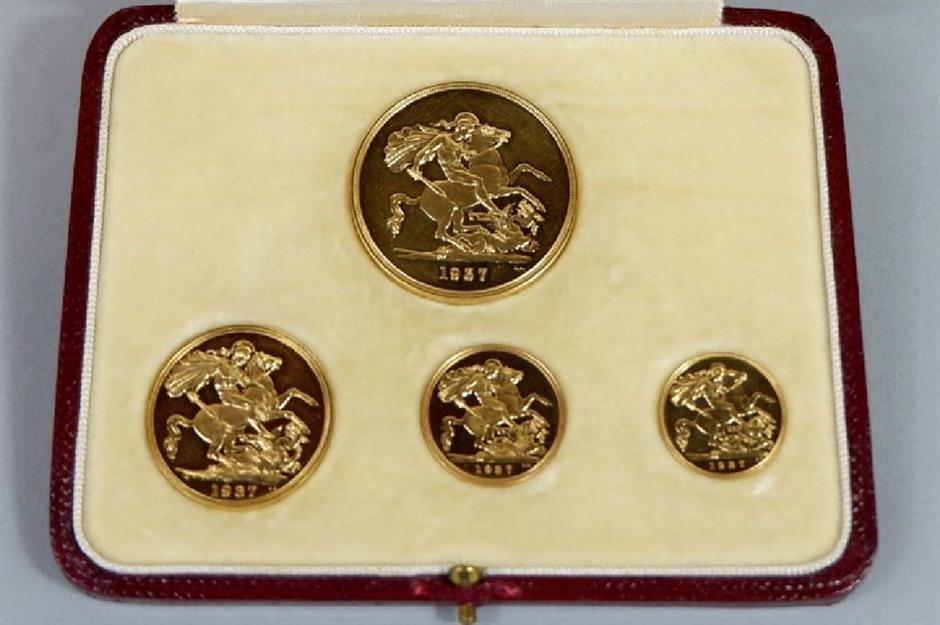
Treasure can be found in the most surprising locations, and in February auctioneer John Rolfe was shocked at what he discovered in a rat-infested cottage near Stroud in England. Exploring the damp and dilapidated former home of a late hoarder wasn’t an exciting prospect, until the torch on Rolfe’s phone caught a glint of gold…
Royal commemorative coins among decay

Gold coins were stashed all over the house, with some even found nesting in a sugar bowl. Despite the disrepair of their surroundings, they were in immaculate condition, receipts and all. Among the collection was a 1937 specimen coin set in a leather case, which later sold for £8,000 ($10.3k), and a set of coins for Queen Elizabeth II’s Jubilee in 2002, which went for £5,000 ($6.4k) at auction. In total the remarkable discovery generated a whopping £80,000 ($101k).
Coins washed up in Florida

Most beachgoers prefer to stay at home when a storm hits, but not treasure hunter Jonah Martinez. Frantic weather causes for objects to move around, which can often reveal hidden trinkets. In February, armed with metal detectors, Martinez and two friends picked up a signal on a Florida beach and soon dug up 22 silver coins dating back over 300 years.
Coins washed up in Florida
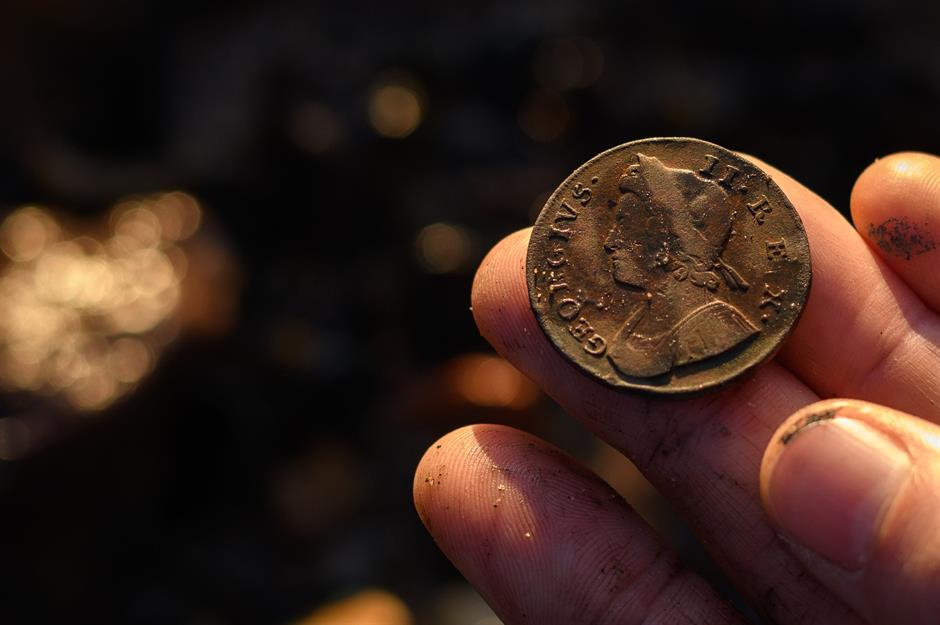
The hoard of 300-year-old silver coins is thought to have washed ashore from sunken Spanish shipwrecks close to Wabasso Beach in Indian River County. The collection is of a similar age to the coin pictured, and Martinez has estimated that the 22 pieces are worth around $7,000 (£5.5k) in total, although he doesn't plan on selling them. While that may seem a lot, it's far from Martinez's most valuable find; the treasure hunter once discovered gold coins worth $6.5 million (£5.1m).
Gold nuggets Down Under

Gold nuggets Down Under
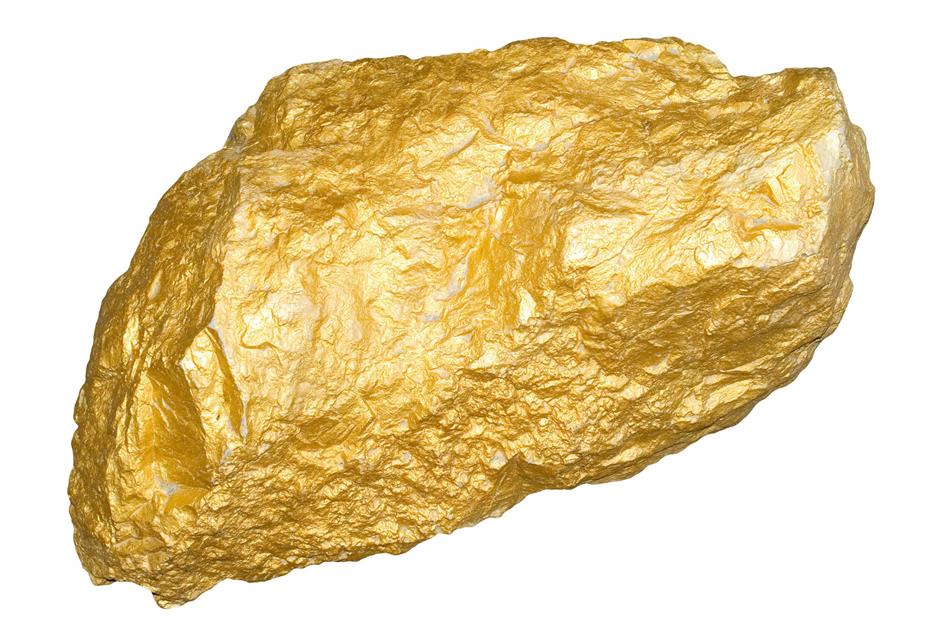
Two gold nuggets were unearthed by the pair, with an impressive combined weight of 3.5kg (7.7lb). Experts have given an estimated value of AU$350,000 ($250k/£190k) for the two lumps of rock, although collectors may be willing to pay more. The metal detectorists featured on TV show Aussie Gold Hunters, with their discovery airing in August.
Gold bars in Grandma’s sheets

Gold bars in Grandma’s sheets
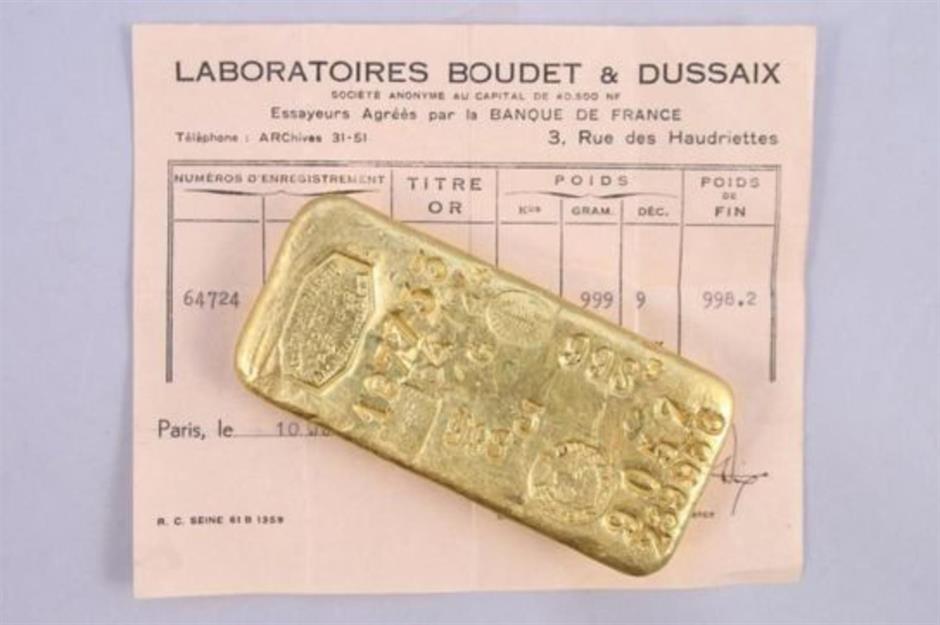
Unravelling the sheets revealed two solid gold bars. Unfazed by their discovery, the boys carried on with their mission to build a den. It was only when they later told their father that something had fallen out of the material that the treasure was truly discovered. Each bar weighed 2kg (1.1lb) and had been bought in 1967. The bars sold at auction for €47,000 ($51.1k/£39.3k) each in June.
The Forrest Fenn treasure chest
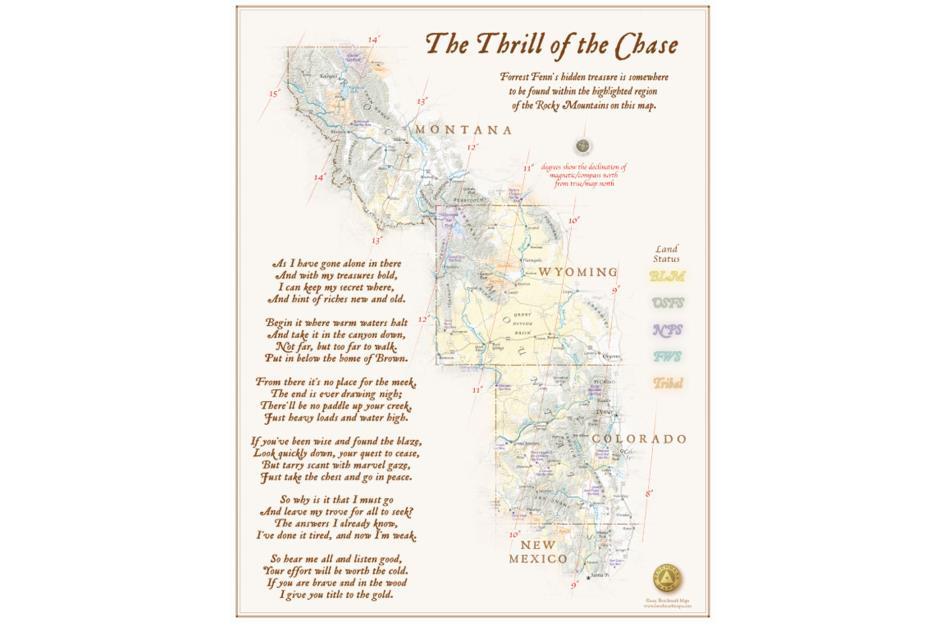
The Forrest Fenn treasure chest
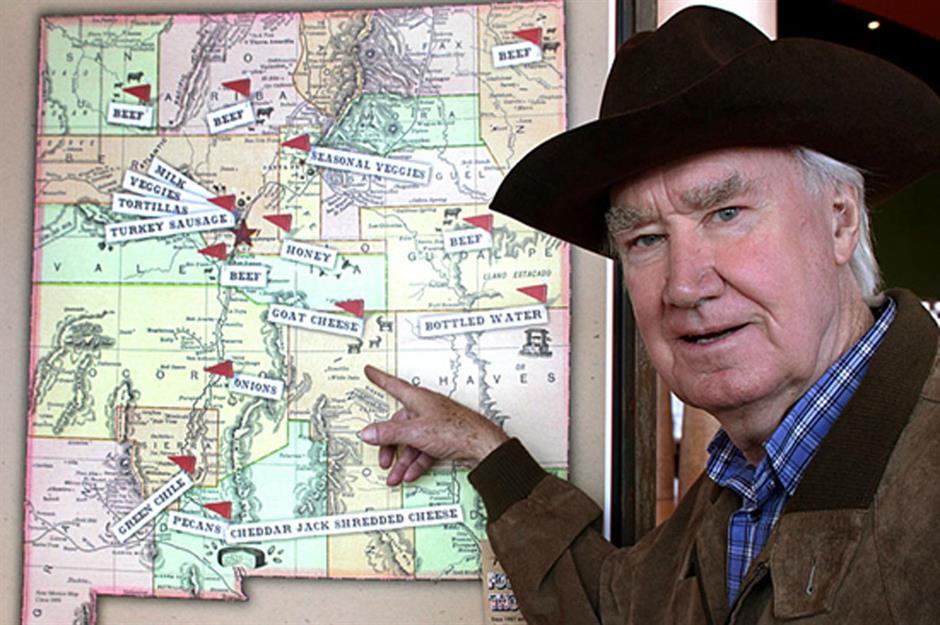
Tragically, over the years five people died in their attempts to discover the treasure in the mountains, which led authorities to beg Fenn to bring his dangerous task to an end. But he refused, and in June this year Fenn claimed an anonymous explorer had finally dug up the long sought-after treasure trove, the contents of which have an estimated value of more than $1 million (£778k). In early December the lucky adventurer was revealed to be a medical student from Michigan called Jack Stuef. Fenn himself passed away in September, just months after his legacy had finally been found.
From Forrest Fenn to Tutankhamun: deadly treasure hunts that have claimed lives
The Peebles hoard in Scotland

In June, metal detectorist Mariusz Stepien discovered what has been described as one of Scotland’s most significant Bronze Age hoards. Stepien was searching in a field near Peebles when he discovered a bronze object around half a metre below ground level. What Stepien and his friends had unearthed brought archaeologists to the site for a 22-day investigation…
The Peebles hoard in Scotland
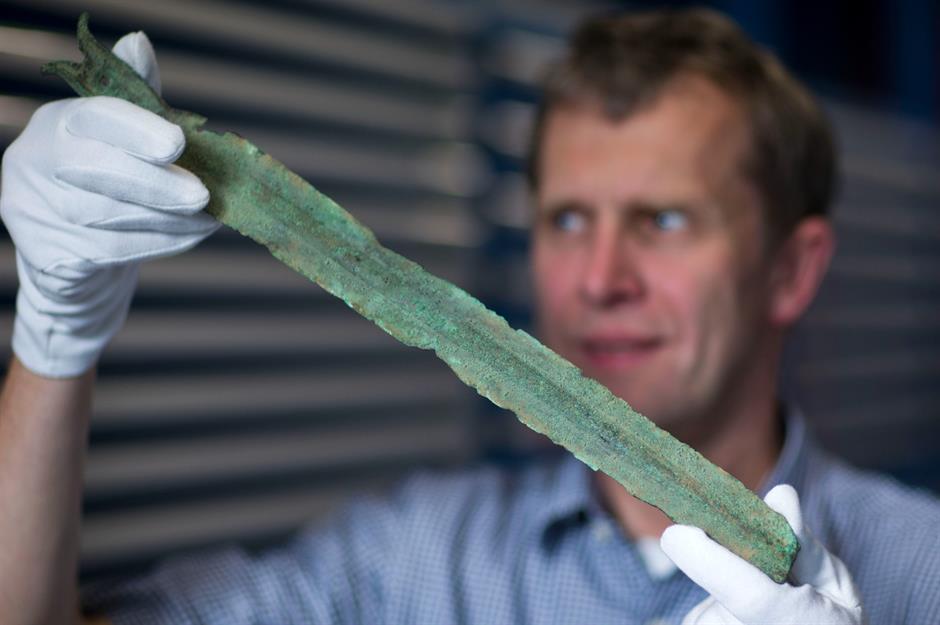
Each day new objects were recovered from the soil, including a complete horse harness and saddle, which were estimated to be around 3,000 years old. This was the first evidence ever found as to how Bronze Age horse harnesses were put together. The site was rich with historical finds, all well-preserved thanks to the surrounding soil, and other exciting discoveries included a sword still in its scabbard (similar in age to the one pictured), straps, buckles and chariot wheel axle caps. Further investigation needs to be done as to why the objects were left in this particular part of Scotland.
Remains of an Aztec palace
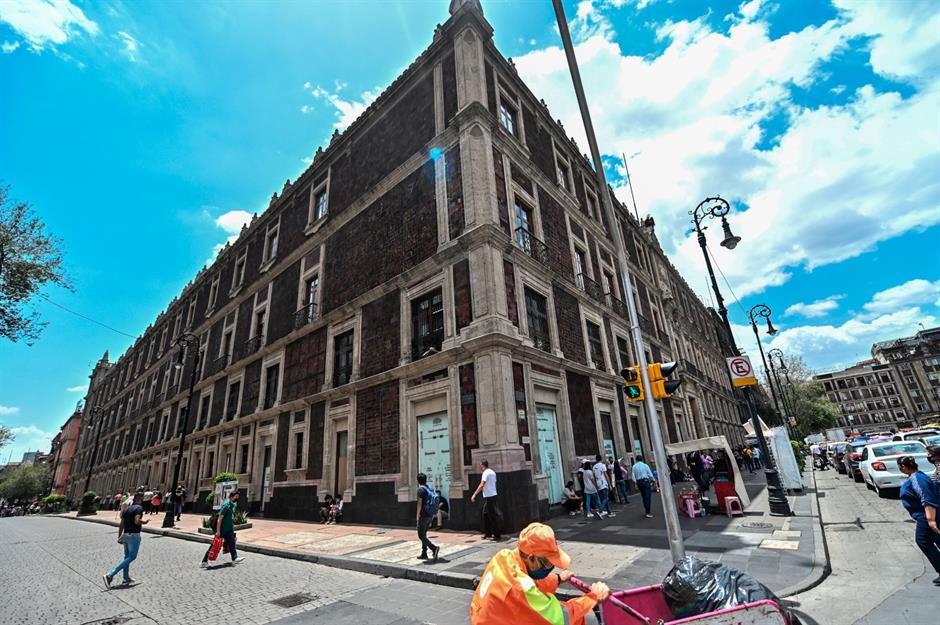
Remains of an Aztec palace
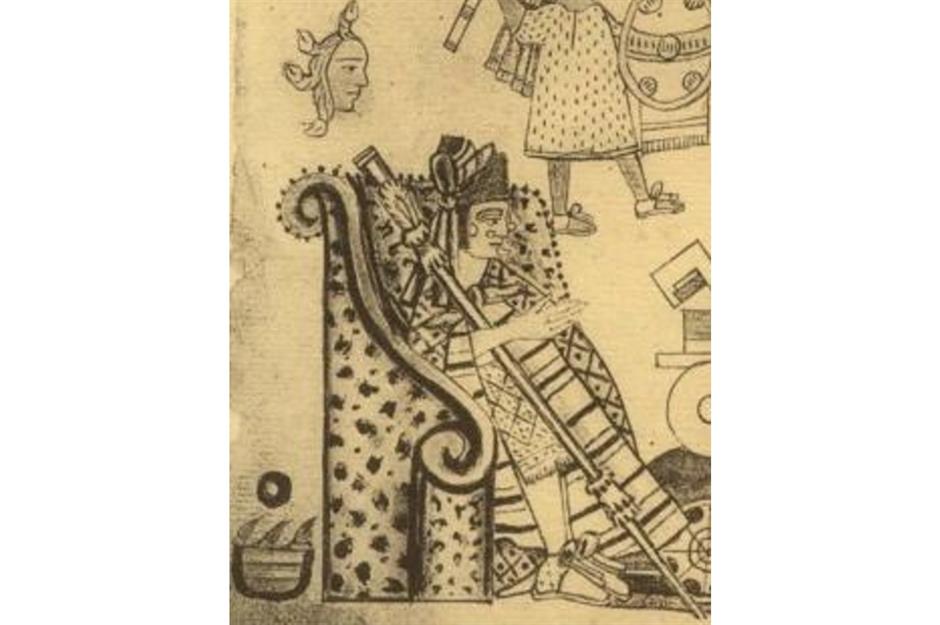
Silver coins in a pub garden
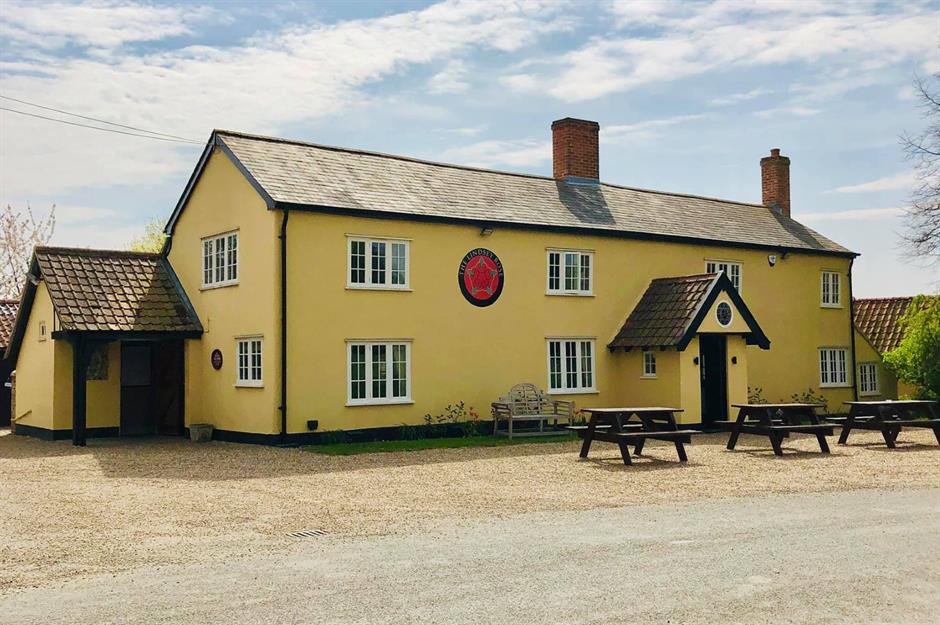
Silver coins in a pub garden
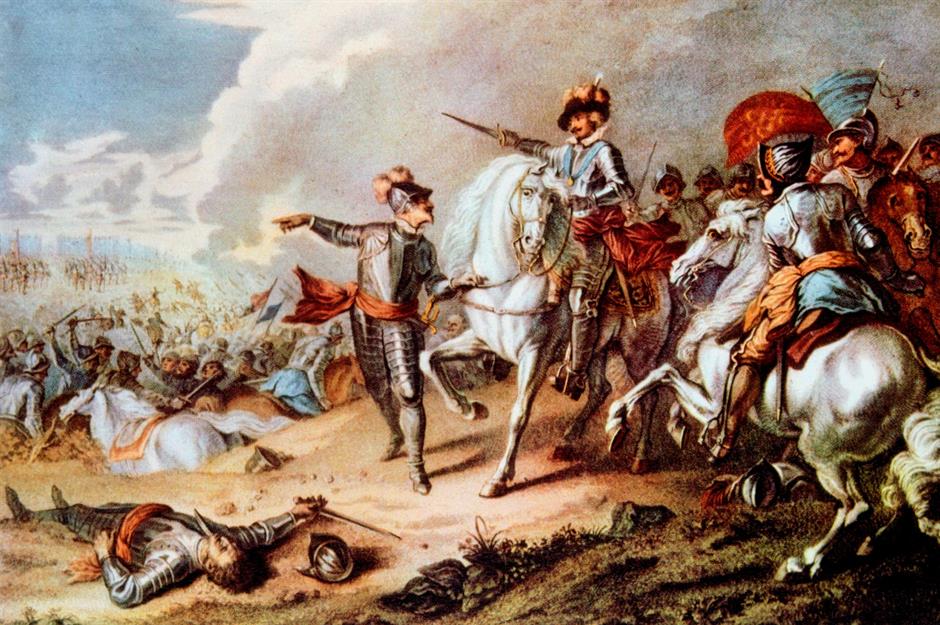
10,000-year-old woolly mammoth

10,000-year-old woolly mammoth
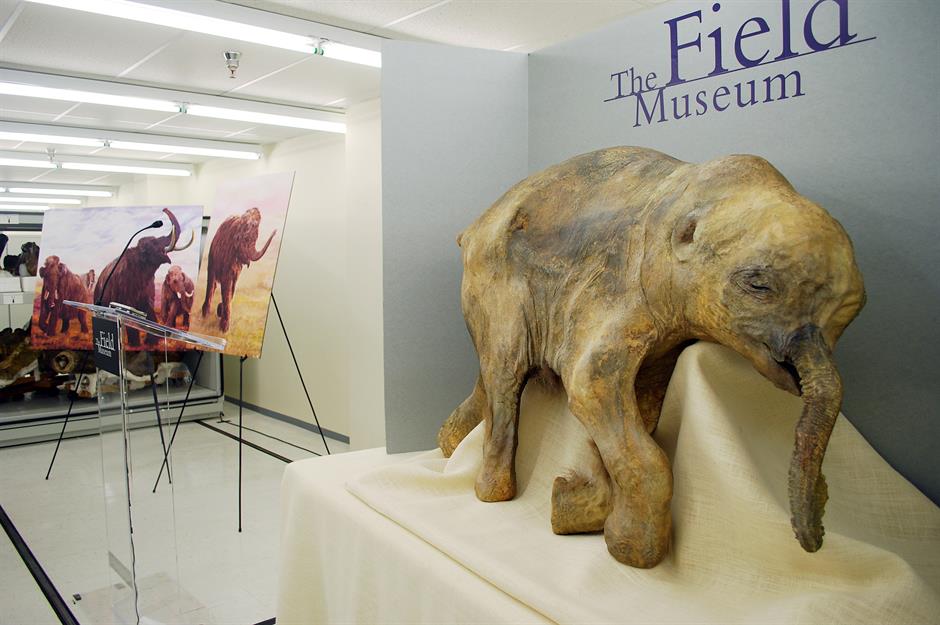
The 10-foot (3m) tall mammoth had been preserved in the silty lake for an astonishing 10,000 years until its excavation in August this year. It’s thought the animal will be named Tadibe after its finder Konstantin Tadibe, who is a local reindeer herder. While this creature is an incredible discovery, it is not the best-preserved mammoth to have been found in the Yamal peninsula. That title belongs to Lyuba (pictured), who was discovered in 2007 and even had her internal organs and some hair still intact.
Europe’s oldest bone tools
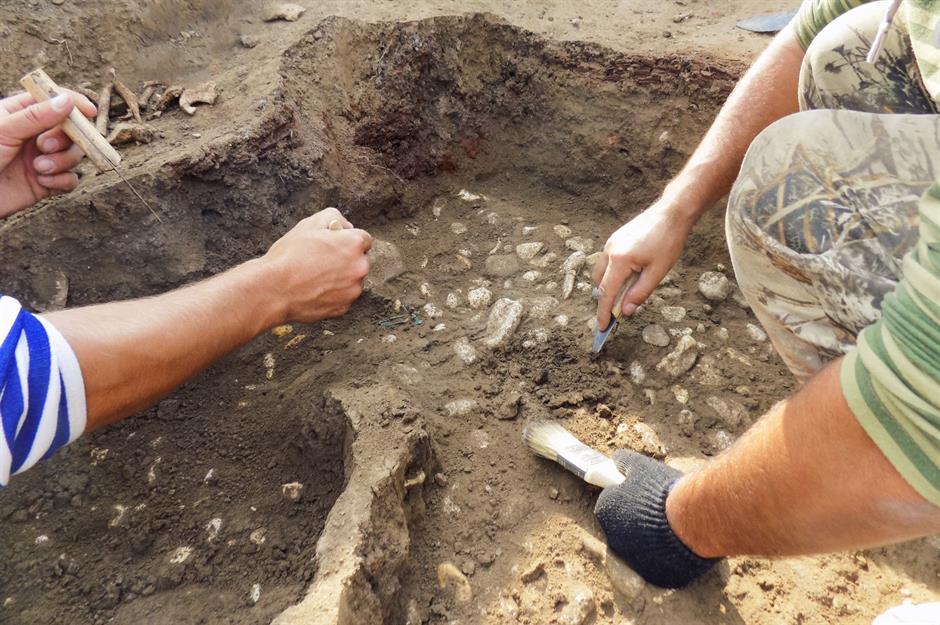
Europe’s oldest bone tools
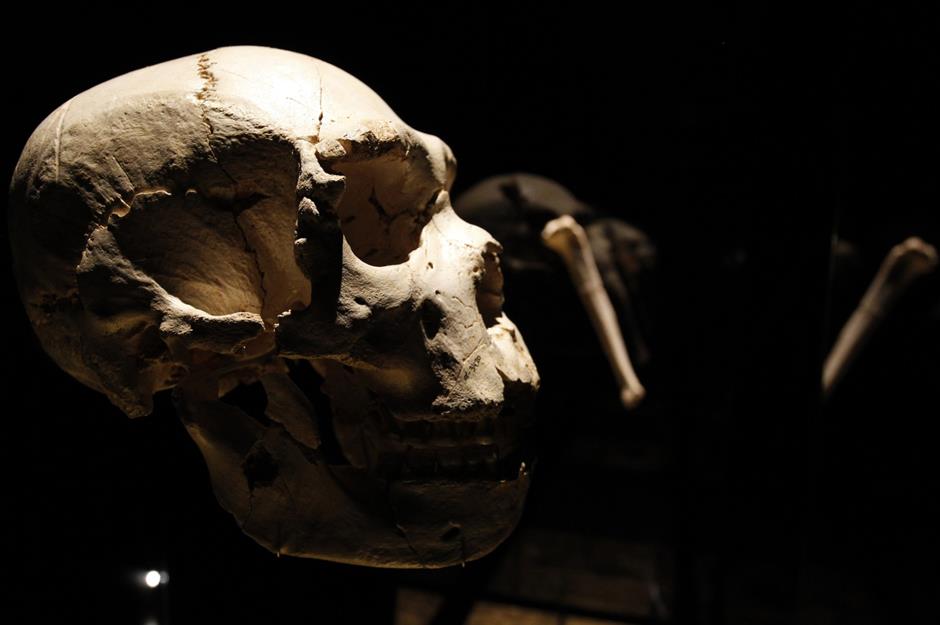
The stone objects were found scattered around the remains of a horse, suggesting that the tools were used to butcher the animal for food. A high tide came in all those years ago, covering and preserving everything that was left at the site for it to be found almost half a million years later. It is now providing an invaluable insight into the daily lives of the Homo heidelbergensis (pictured), possible ancestors to Neanderthals.
600-year-old Tudor house treasures
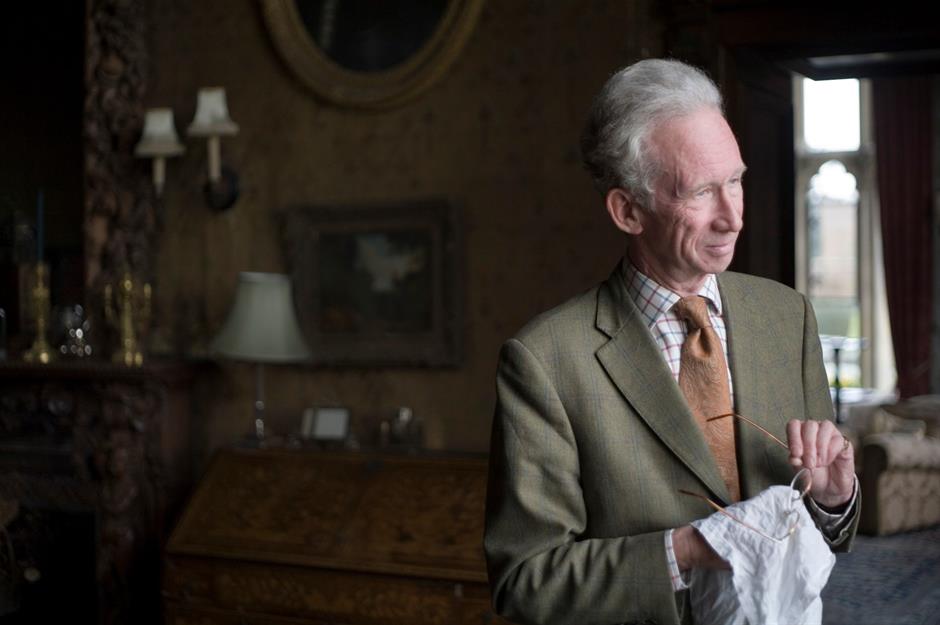
Over the summer, £6 million-worth ($7.8m) of renovations were taking place at the Tudor-era Oxburgh Hall in Norfolk, England to restore the roof of the house, which is maintained by British heritage charity The National Trust. Built in 1482, the property had been owned by generations of the Bedingfield family (pictured is Henry Bedingfield, the most recent heir to the manor), and is considered a treasure in its own right. A shimmer of gold spotted by a builder was the first indication that the work might unearth one or two unexpected finds...
600-year old Tudor house treasures
.jpg)
Items found beneath the roof's floorboards documented the house’s rich history, including a rare 15th-century illuminated manuscript and an embossed book of psalms from 1568. Rats’ nests were also packed with exciting discoveries, such as scraps of handwritten music from the 16th century and more than 200 pieces of Tudor, Elizabethan and Georgian textiles, including silk, leather, wool, satin and velvet. Despite having been unearthed in a nest, the pieces were impeccably well preserved as they had been shielded from sunlight all those years. Not all the discoveries at Oxburgh Hall dated back hundreds of years – there was also an empty box of Terry’s chocolates from World War II, as well as old newspapers and ping pong balls.
Hundreds of gold coins in Israel
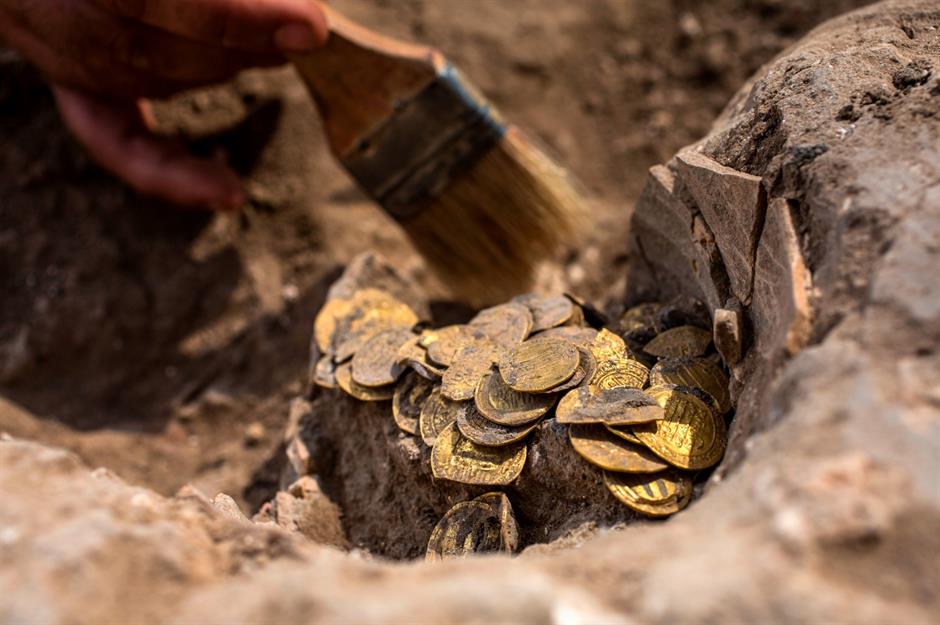
While taking part in pre-military national service is standard for most teenagers in Israel, for two boys it led them to gold. Digging at an archaeological site in Yavne in the centre of the country the pair unearthed a jar of what looked like golden leaves, which was later revealed to be a clay container stuffed with 425 gold coins. Found in late August, the jar and its contents date back an incredible 1,100 years.
Hundreds of gold coins in Israel
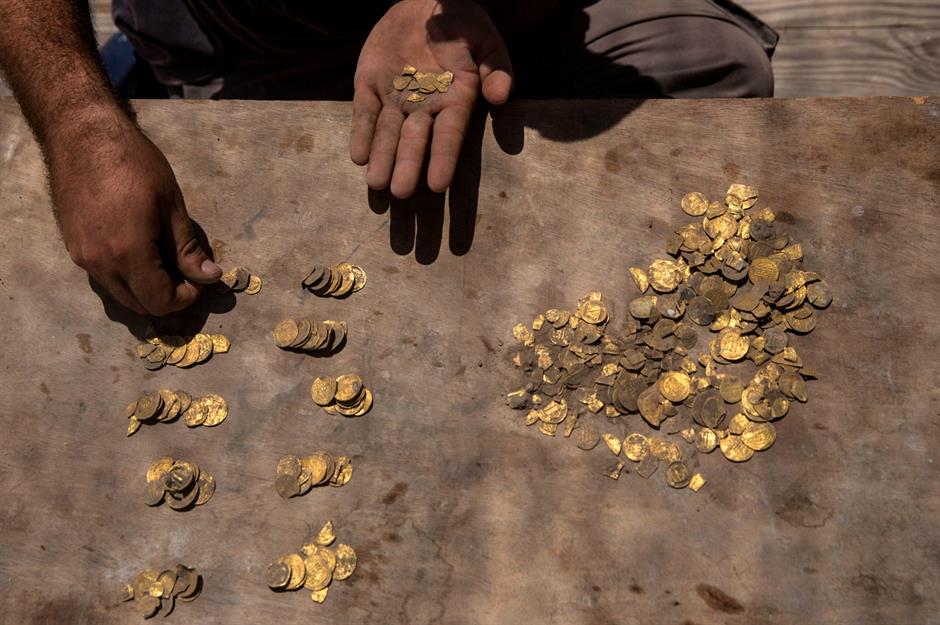
Although thin, every coin is made from the purest gold there is – 24-carat – and in total the hoard of old money weighed in at 845g (1.86lb). While the price of gold fluctuates, that amount of gold would be worth more than $53,000 (£41k) at the time of writing, which doesn’t even account for the find’s historical value.
Now read about the countries that own the most gold
Roman coins discovered with farm equipment
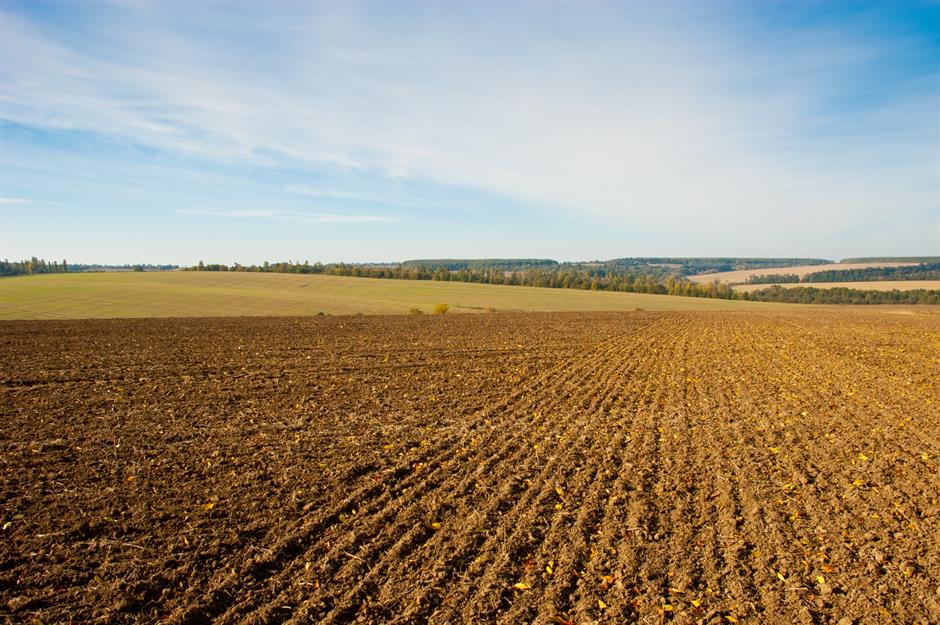
Roman coins discovered with farm equipment

Signed Inuit artwork

Signed Inuit artwork
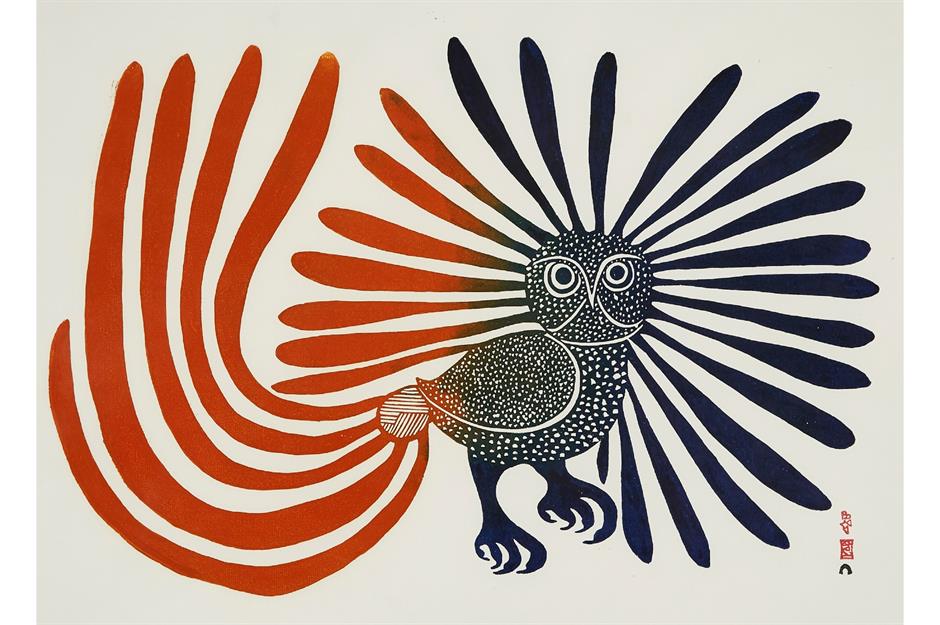
Piles of Inuit artwork were found all around the house, in the garage and among rotting papers. There were around 40 prints in total, including 24 signed works by the renowned artist Kenojuak Ashevak. They had belonged to the West Baffin Eskimo Co-operative in Kinngait – a non-profit organisation that celebrates the culture, art and traditions of the Inuit. The value of this type of work has skyrocketed in recent years, with one of Ashevak’s pieces, Enchanted Owl (pictured), having sold at auction for CA$204,000 ($153k/£120k) in 2019.
Stolen books found in Romania

Like a scene from a spy film, back in 2017 more than £2.5 million ($3.2m)-worth of precious books were snatched from a transit warehouse in London, England in a five-hour heist where two thieves drilled holes in the warehouse ceiling and abseiled down to steal the collection of 200 rare books. The men carried the books away in 16 bags, with help from a third man who was also the driver of the getaway car. As soon as it was realised the books had been stolen, the hunt for the perpertrators and the books commenced…
Stolen books found in Romania
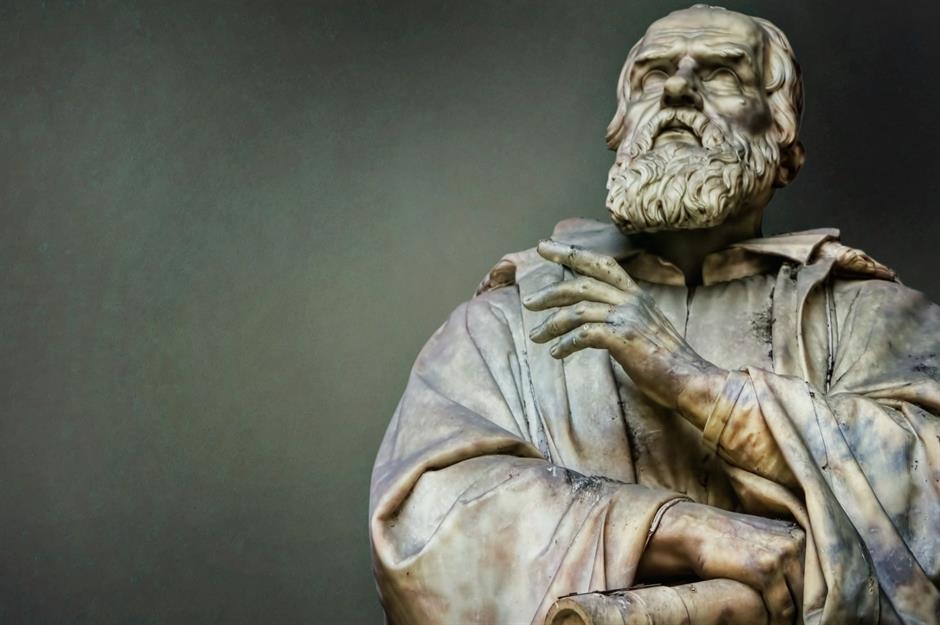
After a three year-long police investigation that saw 45 homes raided across three different countries, the books – including rare first editions by the likes of Galileo and Sir Isaac Newton – were finally uncovered in a cement pit in Romania. The thieves were found to be part of an organised crime group, and 13 men have since been arrested and charged.
These books may have been recovered, but there are plenty of stolen treasures still waiting to be found
222-year-old coin in the churchyard

222-year-old coin in the churchyard
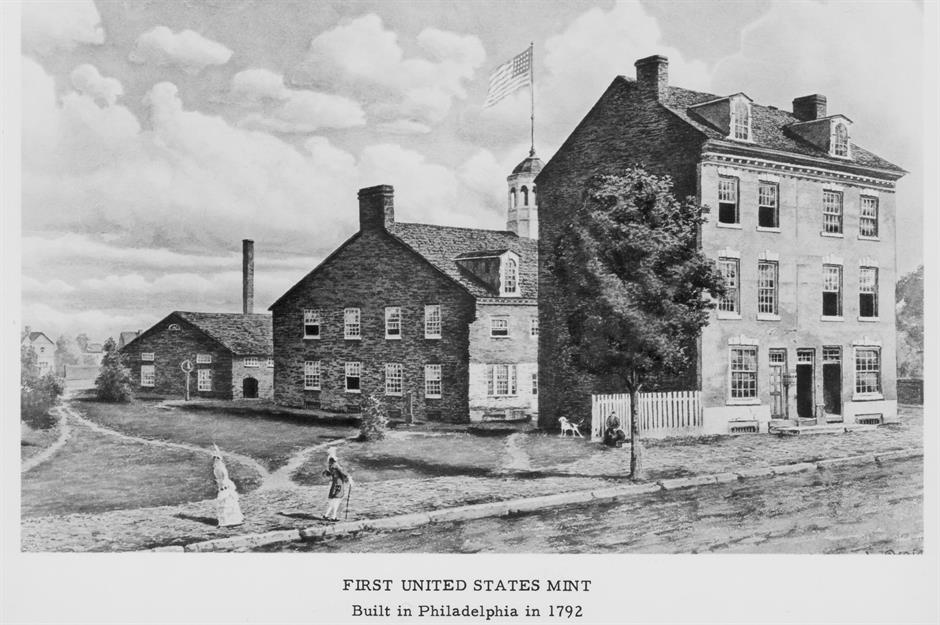
Marble sculptures by the Nazis' official artist
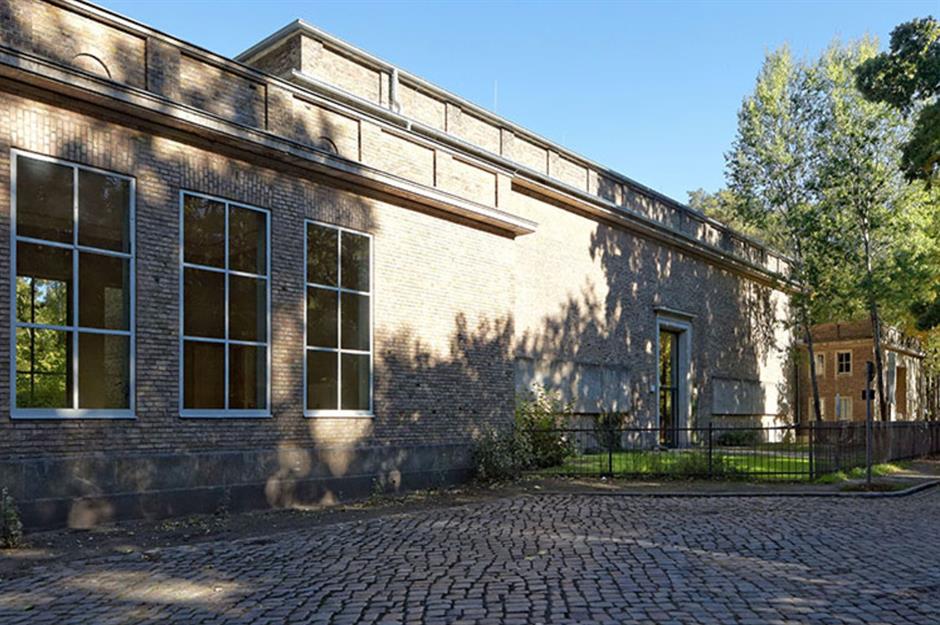
Marble sculptures by the Nazis' official artist
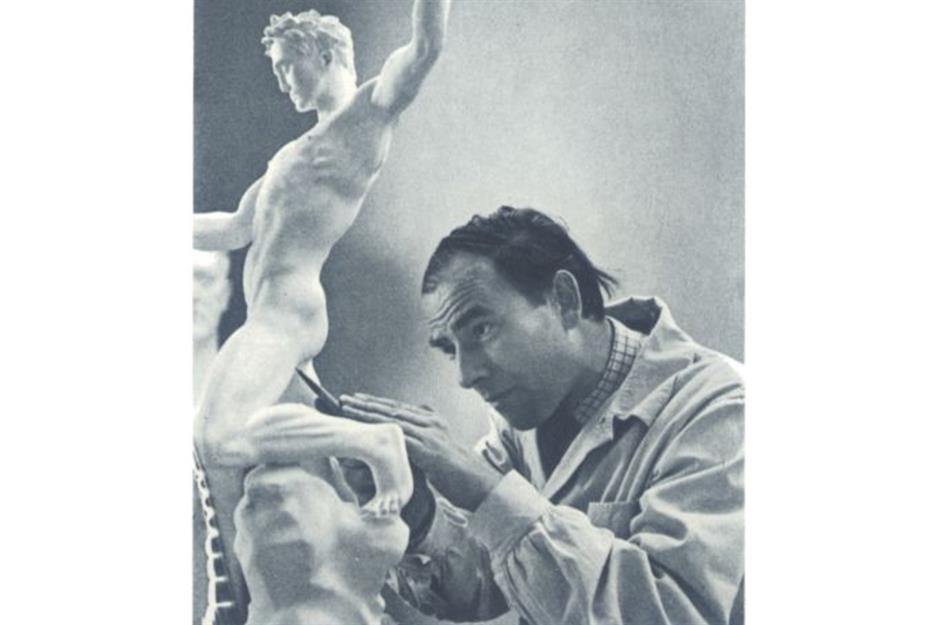
Both sculptures are oversized heads, and one has been recognised as a piece called Romanichel by Arno Breker (pictured), who was one of Adolf Hitler’s favourite artists and the Nazis' official artist. The second head is similar in style, and is also likely to be a Breker piece. Kunsthaus Dahlem opened in 2015 in Breker’s former studio, which had originally been built for him to produce work commissioned by the state between 1933 and 1945. The sculptures were slightly damaged, and were likely harmed when the site was taken over by American troops in the 1940s or during wartime air raids that left the building unusable. The marble heads will be on display at the gallery until January 2021.
Coins in a closet drawer
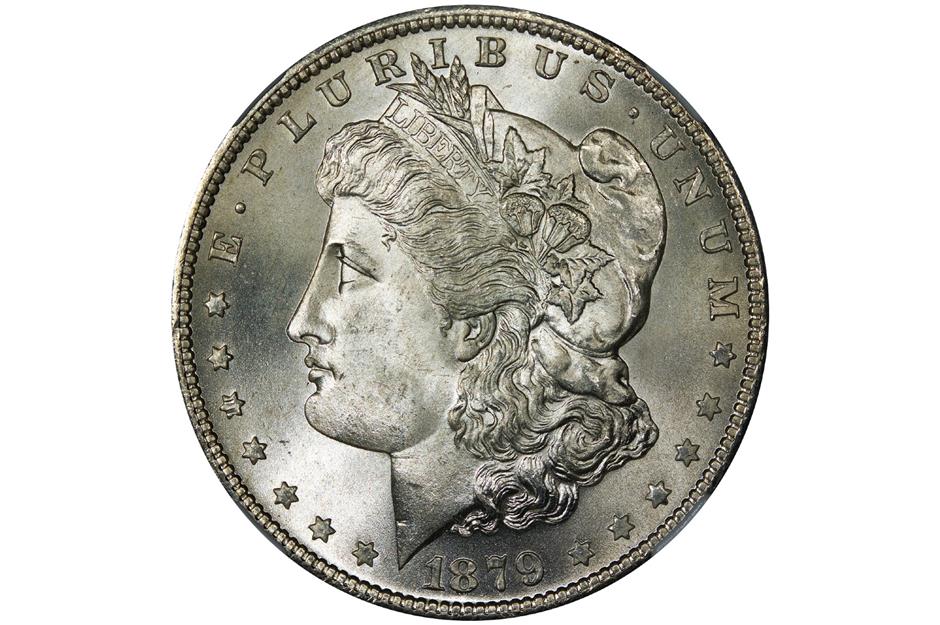
Coins in a closet drawer
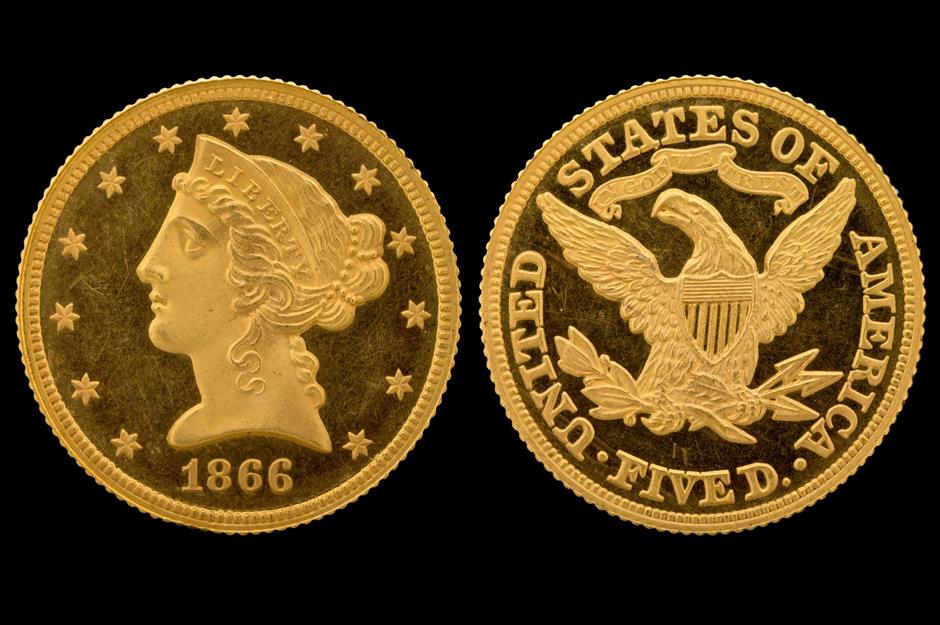
19th-century fencing sword in the garden

19th-century fencing sword in the garden
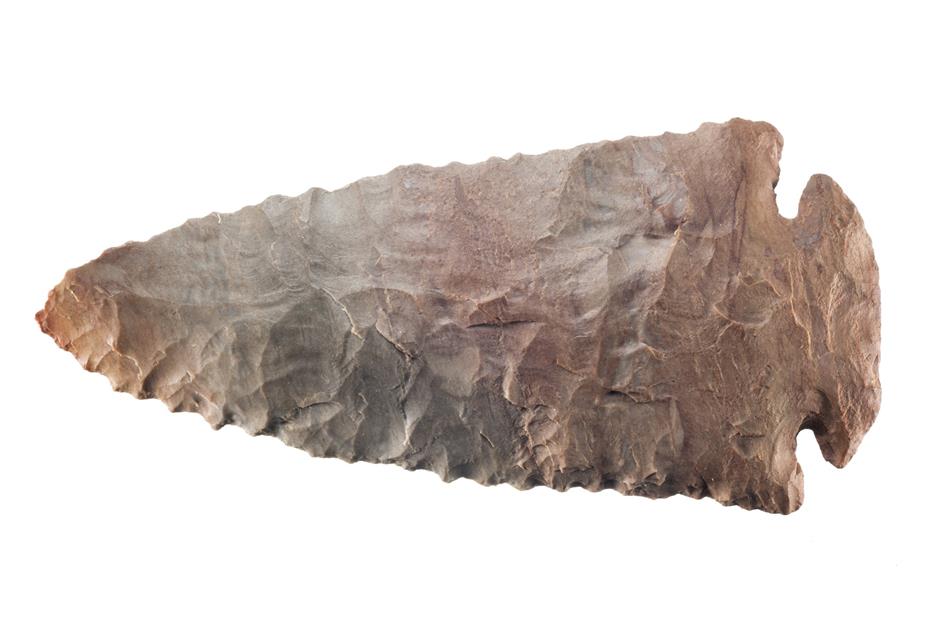
As Hadaway continued to dig, it quickly became clear that her garden had long been a hiding place for historical pieces. Arrowheads (similar to the one pictured), fossils and stone tools were among the items recovered from the ground, and the unsuspecting treasure finder now hopes a local museum will display her bumper crop of artefacts.
Enigma machine in the Baltic Sea
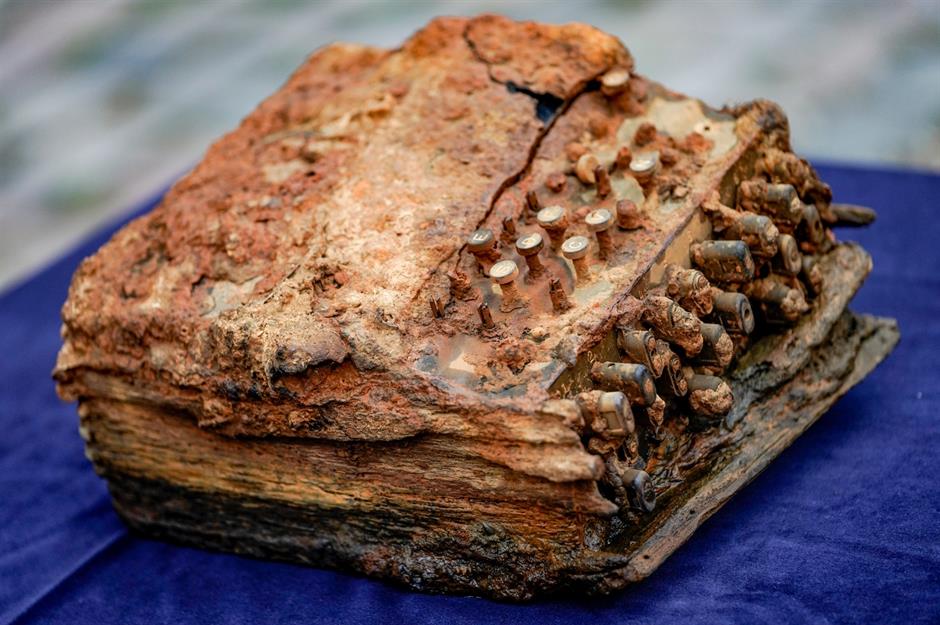
Enigma machine in the Baltic Sea
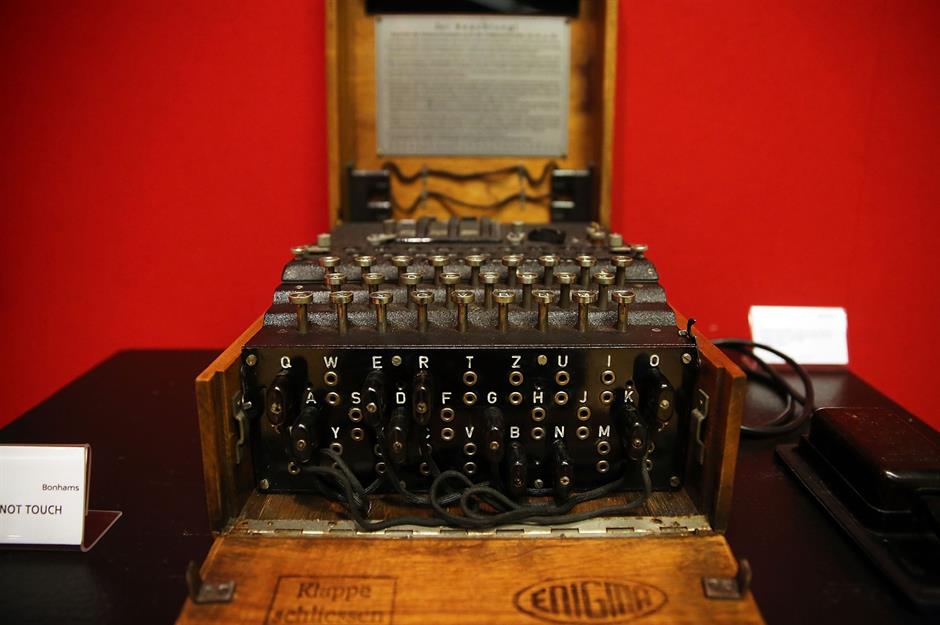
Because of its three-rotor design, experts suspect that the Enigma was thrown overboard from a German warship during the last days of the war. The divers gave their find to the Archaeological Museum in Schleswig-Holstein, Germany, where a thorough desalination process will take place to restore the machine, which has been underwater for seven decades. The restoration process is expected to take around a year, after which the Enigma will be displayed to the public. The machines are of great historic value, and in July a rare four-rotor example (pictured) sold for £347,250 ($462.6k) through auction house Christie’s.
Hermes bust in a sewer in Athens
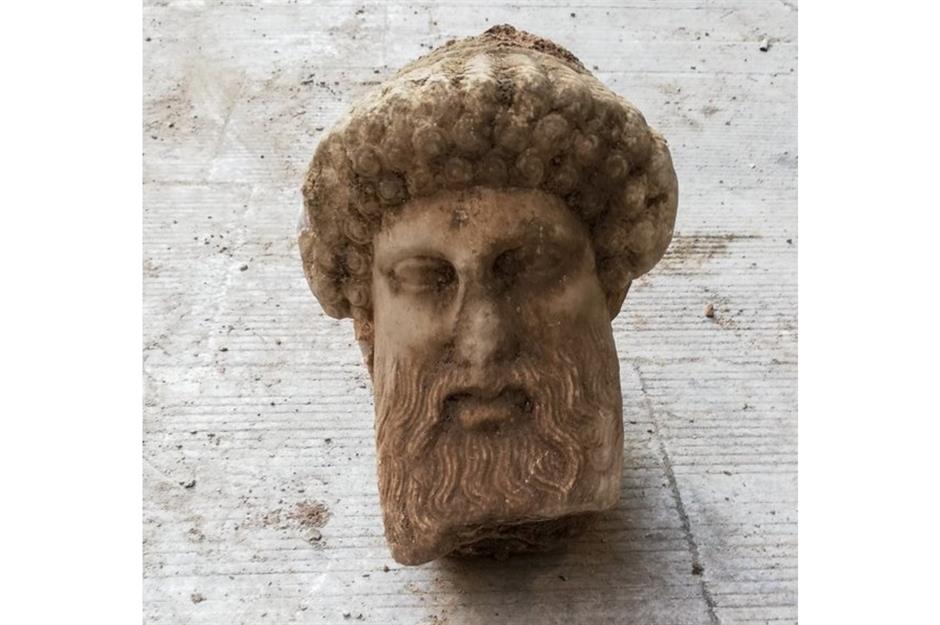
Hermes bust in a sewer in Athens
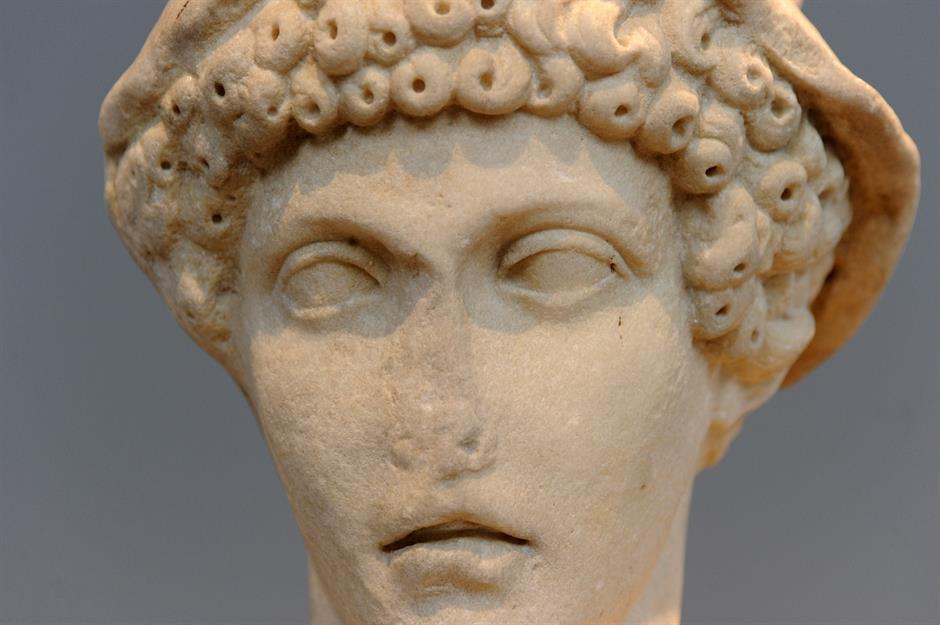
This Hermes bust originally served as a street marker, before being built into the wall of a drainage duct. The sculpture is not only rare because of where it was located, but also in how it depicts the Greek god. Authorities have described the statue as capturing Hermes “at a mature age”, unlike most depictions which show him as young and athletic, such as this interpretation at Massimo Museum in Rome, Italy.
100 ancient coffins in Egypt
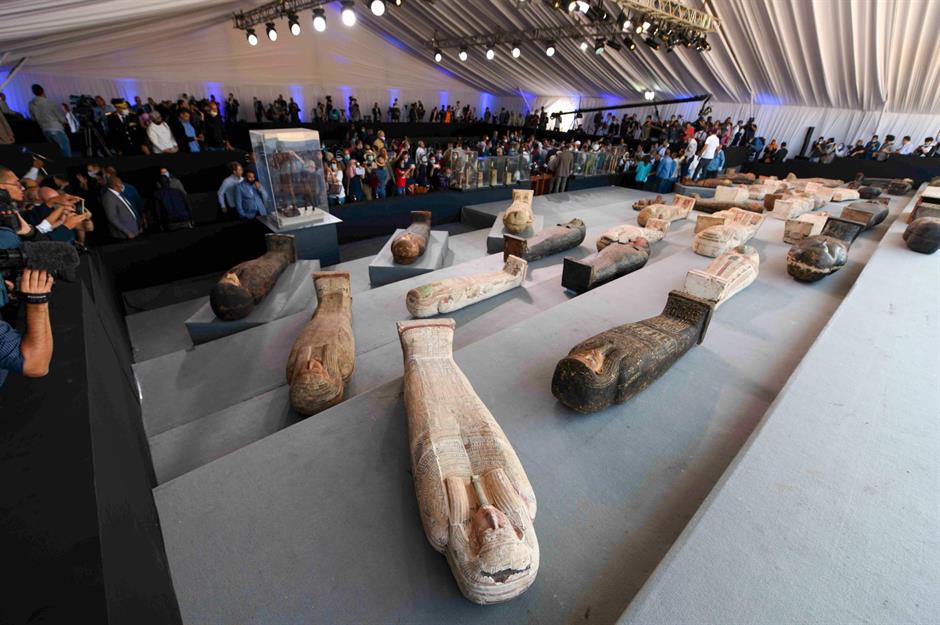
In November Egyptian officials revealed that more than 100 coffins had been discovered at the Saqqara site in Egypt, which makes up part of the necropolis in the ancient capital of Memphis. Through X-ray scanning it has been found that some of the wooden sarcophagi contain excellently-preserved mummies, which are thought to date back to 320BC when the Ptolemaic dynasty ruled Egypt.
100 ancient coffins in Egypt
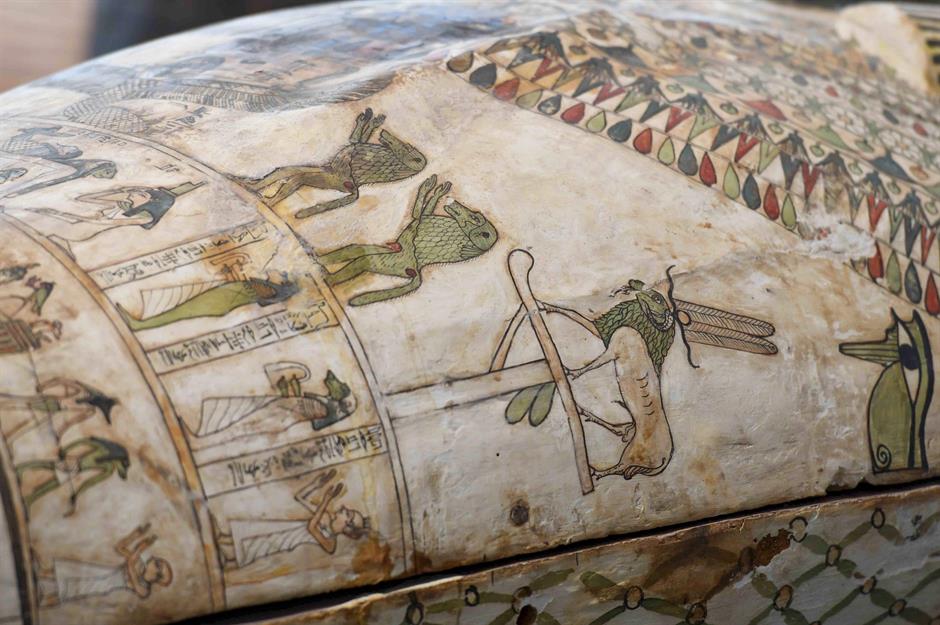
Authorities also announced that more than 40 gilded statues of ancient deities and funerary masks had been found, and that all the items had retained their intricate and colourful exteriors. After featuring in a temporary exhibit at the Step Pyramid of Djoser, the sarcophagi and statues will be moved to various museums in Cairo. Saqqara has yet to be fully excavated, and so more treasures are expected to be unearthed from the site in the coming years.
15th-century gold coins under the weeds
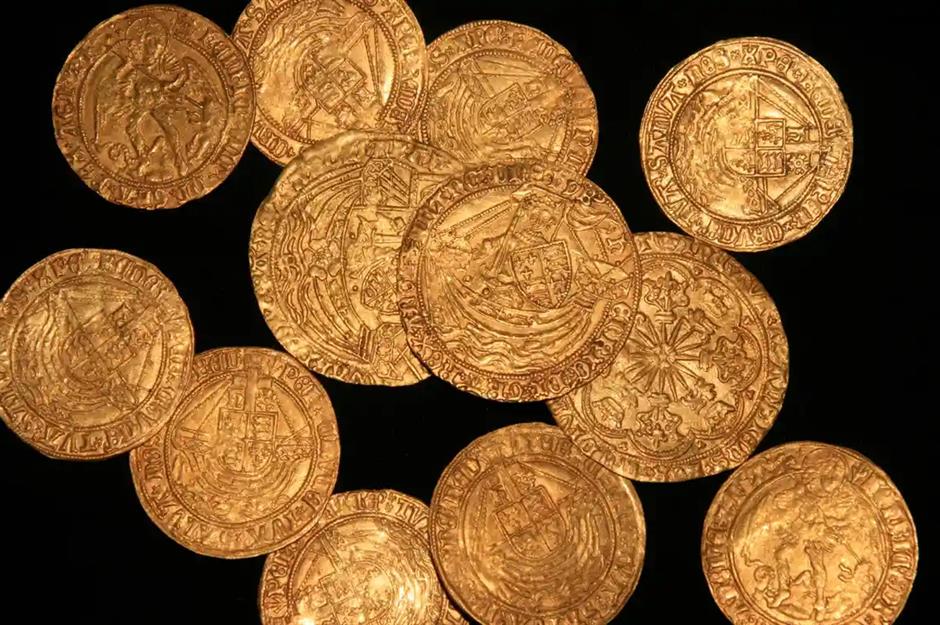
Finding treasure in your own garden is a rare occurrence, but one gardener, who chose to remain anonymous, pulled something a lot more exciting than weeds out of the ground in mid-December. A hoard of 63 gold coins and one silver coin had been lying in wait beneath the man’s flowerbed in the New Forest, England and the collection dates back to the 15th century. The value of the stash easily exceeds what would have been a typical annual wage during the Tudor period, and four of the coins are particularly rare as they include the initials of Henry VIII’s wives Catherine of Aragon, Anne Boleyn and Jane Seymour.
15th-century gold coins under the weeds
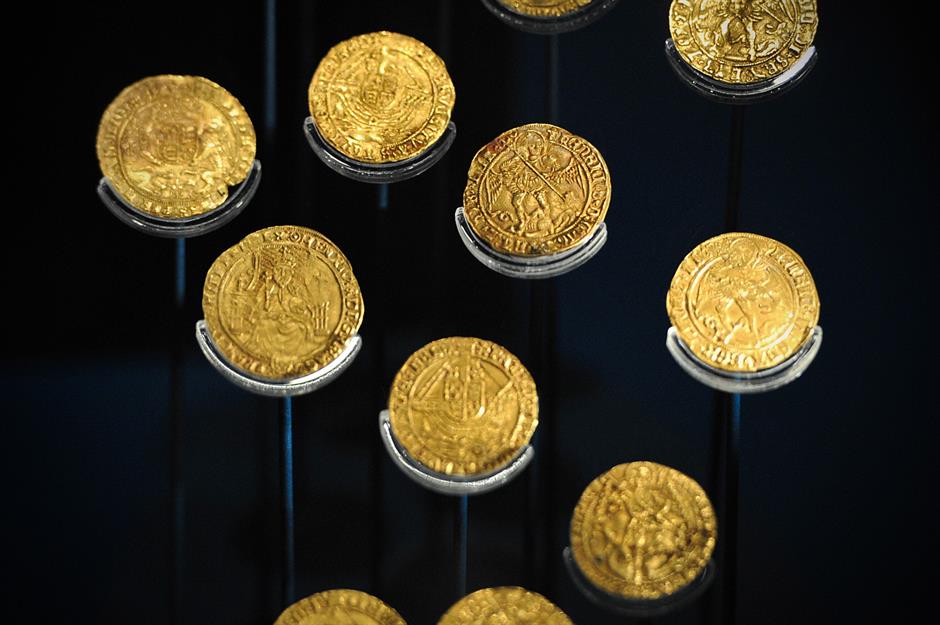
Wood from the Great Pyramid

Wood from the Great Pyramid
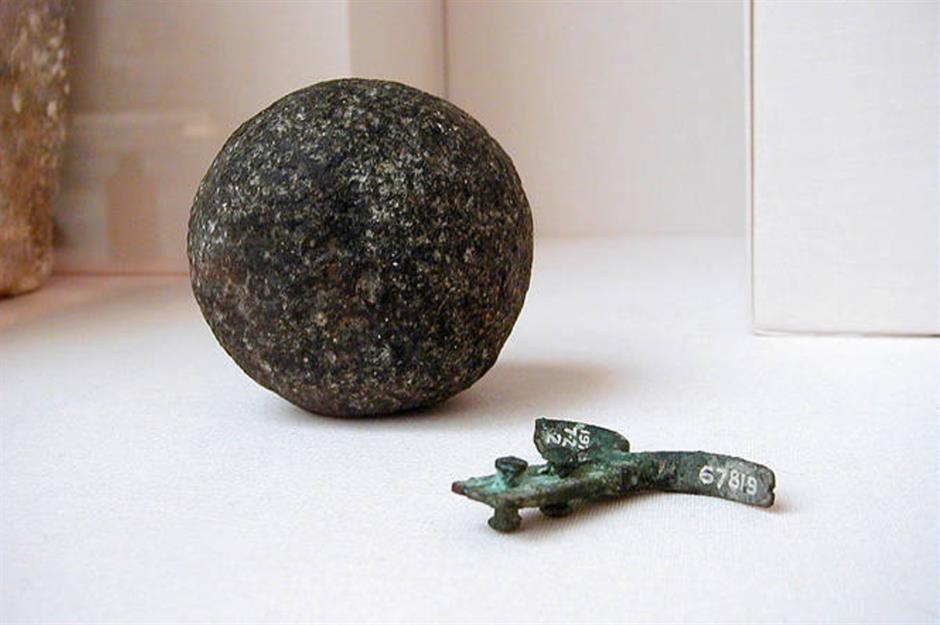
The cedar fragments were originally discovered in the Great Pyramid’s Queen’s Chamber in 1872 by engineer Waynman Dixon, but they went missing after being donated to the university in 1946. Uncovering the wood pieces was hailed as a fantastic find, as they are one of only three items to have ever been recovered from within the oldest and largest of Giza’s pyramids. A copper hook and a small dolerite ball (pictured) make up the rest of the trio know as the Dixon Relics.
Now read about people who bought homes and found treasure
Comments
Be the first to comment
Do you want to comment on this article? You need to be signed in for this feature